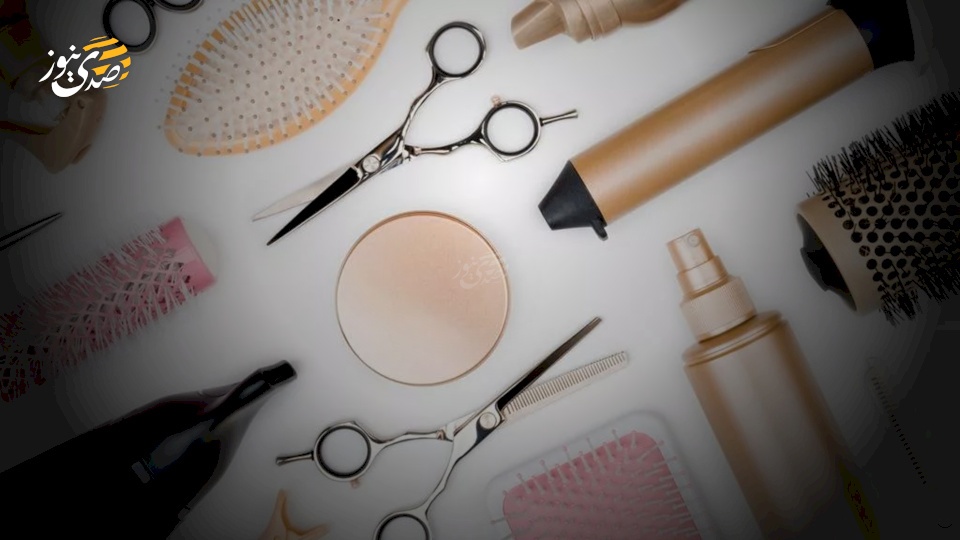
How Does Hair Styling Affect the Lungs?
SadaNews - The regular routine for protecting hair from heat damage transforms the bathroom into a hazardous emission zone, where scientists have discovered that styling hair for just 10-20 minutes with common products results in inhaling about 10 billion ultra-fine particles directly into the lungs, akin to standing next to a busy road during rush hour or smoking several cigarettes, according to a report by "New Atlas" citing the journal Environmental Science & Technology.
Researchers from Purdue University have revealed what exactly happens when hair styling products are exposed to heat, providing the first quantitative evidence that daily hair care routines can be a significant source of indoor nanoparticle emissions (or more specifically, ultra-fine particles). The scientists conducted controlled experiments in a small house specifically designed for this purpose, known as the "Purdue Zero Energy Design Guide for Engineers" zEDGE, aiming to recreate realistic conditions to test these pollutants. Three volunteers participated in the study, performing seven regular hair styling routines using the products and tools they would normally use.
Sprays, Serums, and Creams
Participants used their hair styling products – sprays, serum creams, and protective lotions typically applied before or during heat treatment – and employed tools including hair straighteners, curling irons, and hair dryers, with the straightener accounting for the bulk of the sessions. The tool temperatures were set at commonly used levels, ranging from 150 degrees Celsius to 230 degrees Celsius; while the products were not named, it was more about what they contained.
During a hair styling session lasting 10 to 20 minutes, researchers continuously measured air quality using scanning mobility particle sizing (SMPS) devices and condensation particle counters (CPC), which can detect and count particles as small as a few nanometers.
Subsequently, gas chromatography and mass spectrometry techniques were used to determine the chemical composition of these emissions. Researchers found that the emitted nanoparticles, resulting from heating, primarily consisted of concentrated volatile organic compounds (cVOCs). A significant portion of these were cyclic methyl siloxanes (cVMS), particularly decamethylcyclopentasiloxane (D5), a silicone commonly used in hair care formulations that enhance softness and shine.
When heated, these siloxanes evaporate and condense into extremely fine particles that float directly in the air and can be easily inhaled. The estimated exposure level to D5 through inhalation ranged from 1 to 17 mg per styling session. Although this amount may not seem large, the concern lies in its particulate form, as well as the frequency of exposure.
Heating hair products breaks down silicon compounds, such as D5, into ultra-fine particles measuring less than 100 nanometers, making them ideal for reaching the deepest parts of the lungs and even entering the bloodstream. These compounds also have the potential to accumulate (bioaccumulate) in the human body. As for what ends up in the lungs, a 20-minute hair styling session can release particle counts equivalent to smoking several cigarettes.
Billion of Nanoparticles
Lead researcher Nasrat Jung, an assistant professor in the Lyles School of Civil Engineering at Purdue University, stated, "It's extremely concerning. The number of inhaled nanoparticles from using conventional store-bought hair care products was far greater than expected."
Over the 21 sessions, a 10-20 minute hair styling routine released tens of millions of ultra-fine particles per cubic centimeter of air, with the hairstylist inhaling approximately 10 billion.
PhD researcher Jiangui Liu commented, "The formation of nanoparticles in the atmosphere responded rapidly to these thermal applications."
He added, "Heat is the main factor... cyclic siloxanes and other low-volatility components vaporize, nucleate, and grow to form new nanoparticles, most of which are smaller than 100 nanometers."
We now know that ultra-fine particles pose a significant health (and environmental) concern due to their ability to penetrate the alveoli in the lungs and enter the bloodstream. Previous studies have linked exposures of this size to oxidative stress, respiratory inflammation, neurological issues, and neurodevelopmental problems.
This recent study builds on researchers' 2023 findings that investigated harmful chemicals emitted from hair care products into the air during styling sessions.
The good news is that there's no need to toss out the hair straightener just yet. Practical steps can significantly reduce exposure to this invisible danger, including using an exhaust fan in the bathroom while styling hair (which, in the experiments, reduced nanoparticle content by more than 90%), and operating styling tools at temperatures below 150 degrees Celsius. Researchers also noted that silicone-free products would help reduce the number of nanoparticles generated from heat exposure.

Predictions for a Decline in Global Smartphone Shipments in 2026

US Congress Launches Investigation into the Use of Ticks as Biological Weapons

Russia Develops Fuel That Provides Energy for a Thousand Years

10 Daily Habits that Waste Time and Energy

7 Exercises to Strengthen Your Calf Muscles

Creative Commons Organization Supports "Pay-Per-Crawl" Systems to Compensate Content in th...

Tea and Cocoa Reduce Health Issues Caused by Sitting for Long Hours

